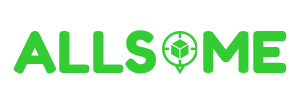Have you ever wondered about tarot cards and their mystical powers? Tarot reading has been utilized for centuries as a tool for understanding, advice, and self-discovery. In this comprehensive guide, we will discover the history of tarot card cards, exactly how they function, and just how you can utilize them to tap into your instinct and gain quality in various elements of your life.
The Background of Tarot Card Cards
Tarot card cards came from the 15th century in Europe, originally as a playing card video game. Gradually, they advanced into a tool for divination and spiritual advice. The typical tarot deck includes 78 cards, split into the Significant Arcana and Minor Arcana.
The Major Arcana cards stand for substantial life events and spiritual lessons, while the Minor Arcana cards focus on day-to-day experiences and obstacles. Each card has an one-of-a-kind definition and significance, which can differ depending upon the deck and the analysis of the reader.
Today, tarot card reading is practiced by people from all profession, looking for solution to their inquiries and support on their life journey.
- The Major Arcana
- The Fool
- The Illusionist
- The High Priestess
- The Empress
- The Emperor
- The Hierophant
- The Lovers
- The Chariot
- Stamina
- The Hermit
- Wheel of Lot of money
- Justice
- The Hanged Guy
- Death
- Temperance
- The Adversary
- The Tower
- The Celebrity
- The Moon
- The Sun
- Reasoning
- The Globe
How Tarot Card Cards Job
When you get a tarot card reading, the cards you pick are believed to show your subconscious ideas, sensations, and needs. The viewers translates the cards’ importance and meaning to give insights into your existing scenario and feasible future results.
Lots of people discover tarot readings helpful for acquiring clarity on partnerships, job choices, and individual growth. The cards can function as a mirror to your psyche, aiding you reveal concealed truths and untapped possibility.
It is essential to strategy tarot card readings with an open mind and a desire to involve with your intuition. While the cards themselves hold no fundamental power, the advice they use can be a valuable device for self-reflection and individual development.
How to Use Tarot Cards
If you’re interested in discovering how to check out tarot cards, there are a number of means to get going. You can buy a tarot card deck that resonates with you, such as the traditional Rider-Waite deck or a much more modern-day analysis. Several publications and on the internet sources are readily available to aid you understand the definitions of the cards and create your analysis skills.
When conducting a tarot card analysis, it is very important to create a calm and spiritual area where you can concentrate your energy and intentions. You may choose to ask a particular inquiry or just seek basic guidance on a particular area of your life.
- Mix the cards while focusing on your question or intention.
- Attract a set number of cards, either randomly or in a details spread.
- Analyze the cards based on their meaning, placement, and your intuition.
- Reflect on the message of the reading and just how it puts on your life.
Benefits of Tarot Card Reading
Whether you’re a skilled fortune-teller or a newbie, tarot cards can offer a variety of benefits for personal development and self-discovery. Several of the benefits of tarot card analysis consist of:
- Gaining clearness and understanding into your existing circumstance
- Exploring various point of views and possible end results
- Connecting with your intuition and inner wisdom
- Equipping yourself to make informed decisions
- Enhancing your self-awareness and personal growth
Conclusion
Tarot cards have a lengthy background as an effective device for understanding, guidance, and self-discovery. By discovering the importance of the cards and using your intuition, you can open the secrets of the tarot card and gain valuable insights into different facets of your life. Whether you’re a skeptic or a follower, tarot reading can be a transformative experience that opens up brand-new possibilities and viewpoints.


Leave a Reply